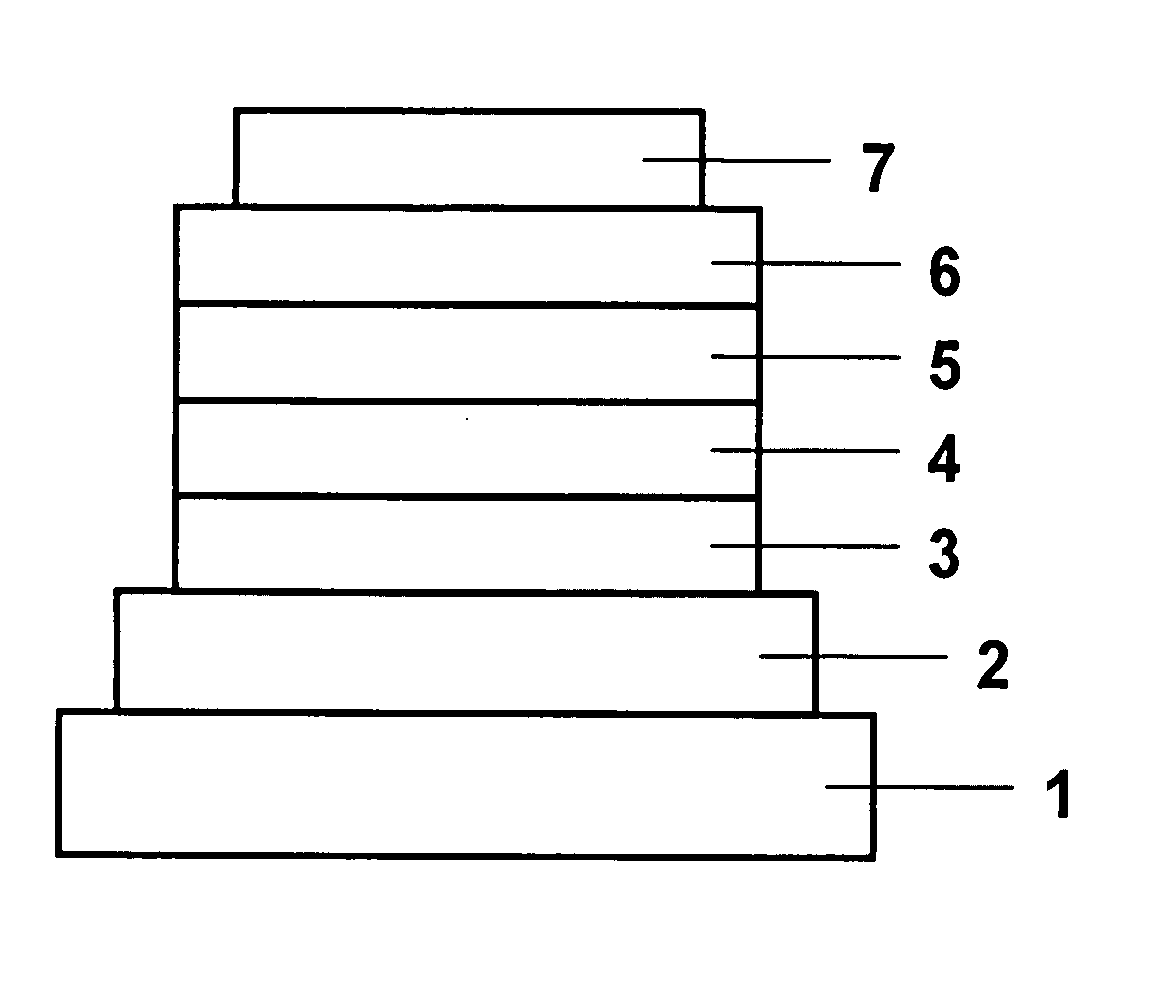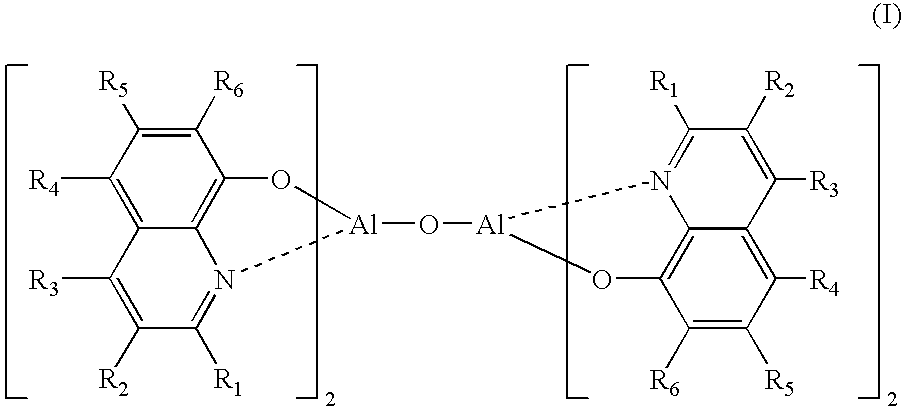Organic Electroluminescent Element
a technology of electroluminescent elements and organic materials, applied in the direction of discharge tube/lamp details, discharge tube luminescent screens, discharge tubes/lamp details, etc., can solve the problems of low luminous efficiency, low luminous efficiency, and low reliability of bcp hole-blocking materials, so as to reduce luminous efficiency and luminous efficiency
- Summary
- Abstract
- Description
- Claims
- Application Information
AI Technical Summary
Benefits of technology
Problems solved by technology
Method used
Image
Examples
example 1
[0059] Copper phthalocyanine (CuPC), α-NPD, and Alq3 were used respectively for forming a hole-injecting layer, a hole-transporting layer, and an electron-transporting layer by vacuum-depositing one compound upon another in thin film at a degree of vacuum of 5.0×10−4 Pa on a glass substrate on which a 110 nm-thick ITO anode had been formed. First, CuPC was deposited on the ITO anode at a rate of 3.0 Å / s to a film thickness of 25 nm to form a hole-injecting layer. On this hole-injecting layer was deposited α-NPD at a rate of 3.0 Å / s to a film thickness of 55 nm to form a hole-transporting layer. Å
[0060] Following this, a light-emitting layer was formed by co-vacuum-depositing Compound 1 and btp2Ir(acac) on the hole-transporting layer from different evaporation sources to a thickness of 47.5 nm. The concentration of btp2Ir(acac) at this point was 7.0%. Then, Alq3 was deposited at a rate of 3.0 Å / s to a thickness of 30 nm to form an electron-transporting layer.
[0061] Further, an elect...
PUM
 Login to view more
Login to view more Abstract
Description
Claims
Application Information
 Login to view more
Login to view more - R&D Engineer
- R&D Manager
- IP Professional
- Industry Leading Data Capabilities
- Powerful AI technology
- Patent DNA Extraction
Browse by: Latest US Patents, China's latest patents, Technical Efficacy Thesaurus, Application Domain, Technology Topic.
© 2024 PatSnap. All rights reserved.Legal|Privacy policy|Modern Slavery Act Transparency Statement|Sitemap



